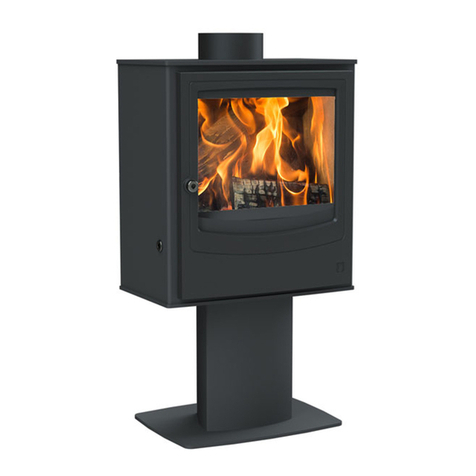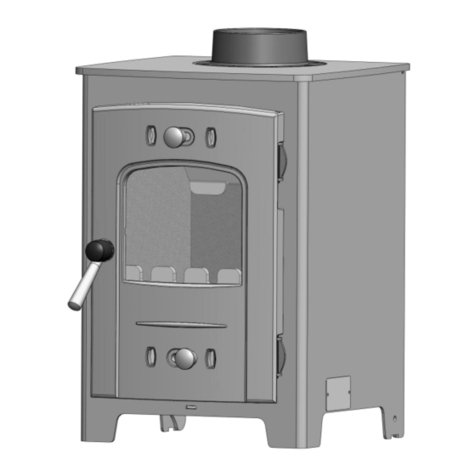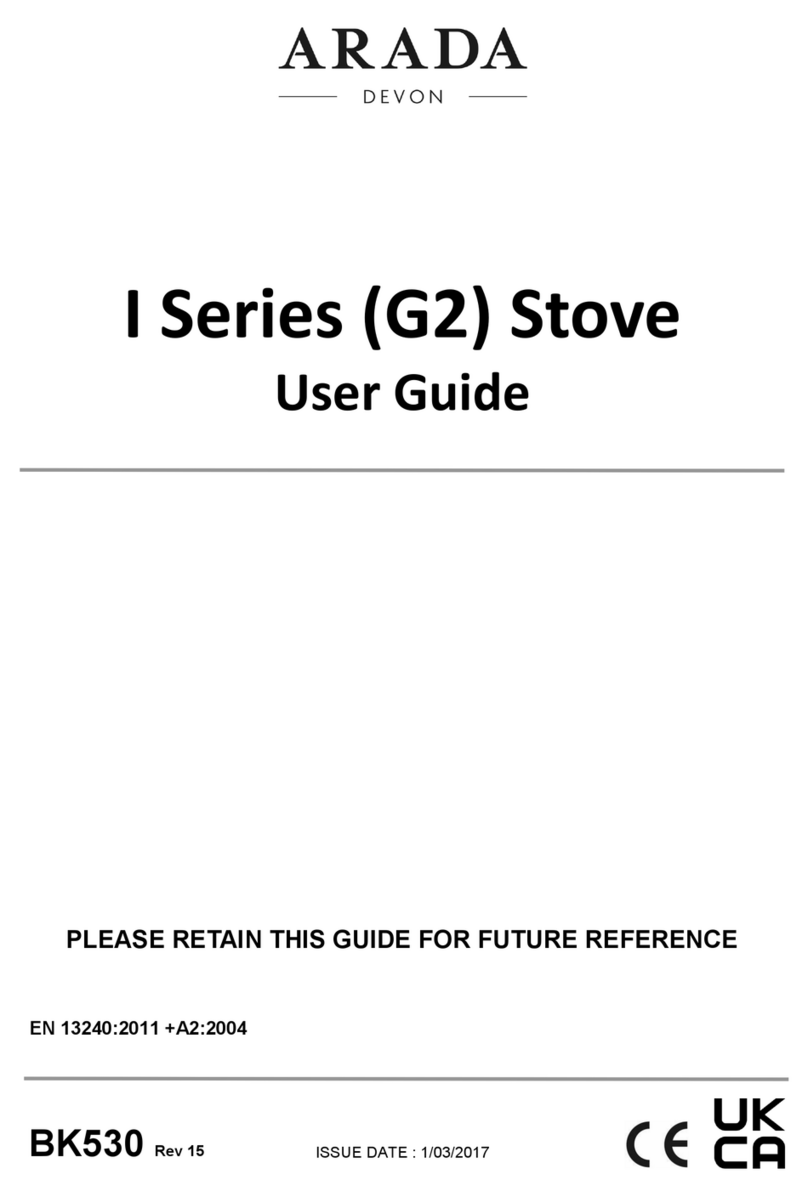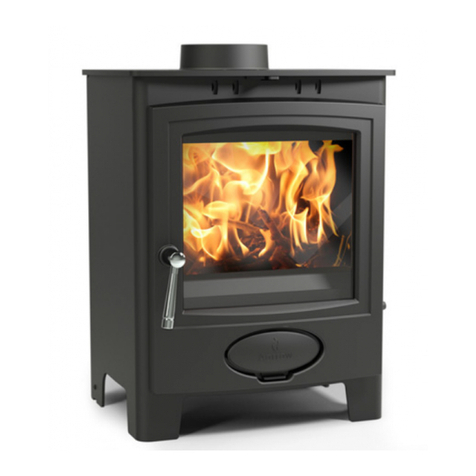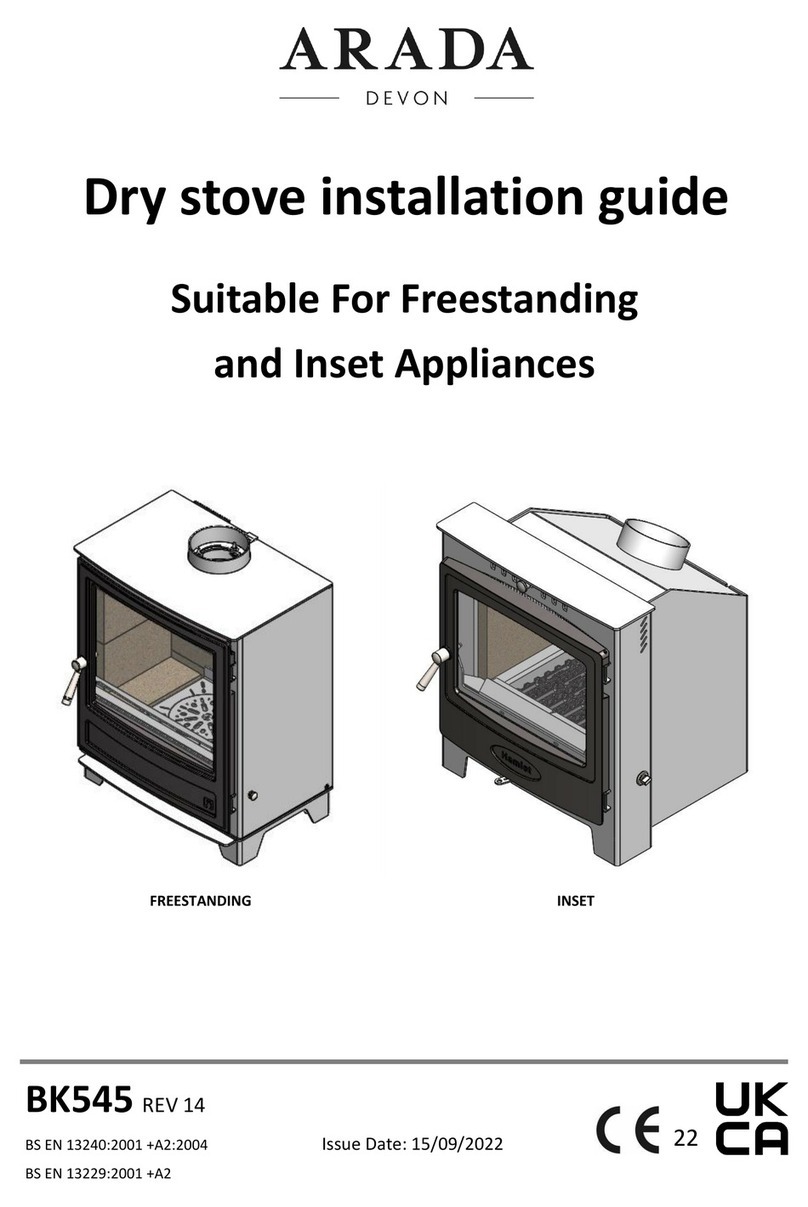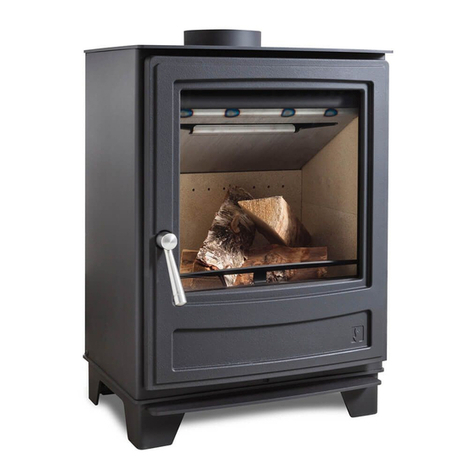Installation Guide
Arada Installation Manual6
Failure to correct an over-drawing flue will invalidate the warranty.
A chimney may comply with regulations but could still be subject to down draught and similar
problems. A chimney terminating above the ridge level is generally less likely to suffer such problems.
If a new chimney is being provided it should fully comply with the relevant Building Regulations that
specify the requirements for solid fuel burning installations. Suitable types of chimney include the
following :
Masonry Chimney : Built with clay or concrete liners, or a chimney block system meeting
Building Regulations. These types of chimneys should be installed in accordance with the
Building Regulations and BS 6461:Part 1.
Factory Made Insulated Chimney : Complying with BS 4543:Part 2 (often called “Class 1
prefabricated metal chimney”). These types of chimneys should be installed in accordance
with Building Regulations and BS 7566: Parts 1 to 4.
Due to the gradual introduction of Europe Chimney Standards ,chimneys will be specified according
to their performance designation as defined in BS EN 1443 that covers the General Requirements for
chimneys. The minimum performance designation required for use with solid fuel burning stoves is
T450 N2 S D3.
The flue and chimney installation must be carefully checked by a competent person before fitting
the stove to ensure it is suitable and will work safely.
If the chimney is old (ie: built of brick or stone without a liner) or being opened up for reuse
additional checks and smoke testing as described in Appendix E of the Approved Document J 2002
Edition should also be carried out to ensure the flue and chimney are in good operating condition.
Check the existing flue is in good condition with suitable access for collection and removal of debris.
If the flue size is more than 225mm (9”) diameter or 200mm (8”) X 200mm (8”) square, a suitable lining
of 150mm (6”) diameter should be fitted, or if the flue length is over 5.5 metres one size larger than
the appliance outlet should be fitted. This should be a double skin stainless steel flexible liner that is
independently certified for use with solid fuel. Details of suitable linings for use with wood and solid
fuel are given in the Official HETAS guide that can be viewed on their website at www.hetas.co.uk.
It is also important that suitable flue pipe complying with the Building Regulations is used to connect
the stove to the flue in the chimney and that suitable access is provided into the flue for regular
inspection and sweeping of the flue ways.
The installer should comply with Building Regulations requirements in respect of providing a Notice
Plate giving details on the chimney, flue lining, hearth and fireplace installation.
Chimneys should be as straight as possible. Horizontal runs should be avoided except where the rear
outlet of the appliance is used, in which case the horizontal section should not exceed 150mm (6”)
in length unless the following criteria is met (at which point a horizontal run is allowed up to 450mm in
length):
The appliance must either be DEFRA exempt or designated by Arada to only burn authorised
smokeless fuel. (The user must also accept that they can only use smokeless fuel).
A chimney calculation in accordance with BS EN 133841: 2002+A2:2008 Chimneys. Thermal
and fluid dynamic calculation methods. Chimneys serving one appliance. has been carried
out and the results show the chimney will operate safely. One copy of the results must be





